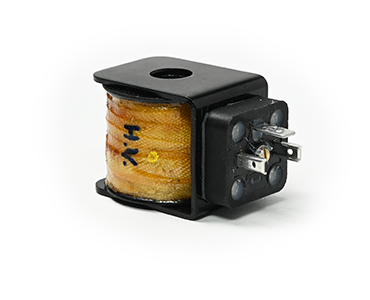
Charging Coils
Charging Coils


Charging Coils are a specific type of solenoid coil used primarily in electrical systems for transferring energy, often found in applications such as vehicle charging systems, power converters, and in some specialized industries like automotive, HVAC, and consumer electronics. They work by generating a magnetic field when electrical current flows through the coil, which then induces a voltage or provides a direct power transfer to a specific component or system.
Charging coils are electromagnetic devices used to transfer energy inductively to another system or device. They are typically used in power systems where direct electrical contacts for energy transfer are either not possible or not practical. The primary function of charging coils is to create a magnetic field that can either induce a voltage in another coil or directly supply power to a device. The energy transfer usually occurs through a process known as inductive coupling, where the energy is transferred wirelessly through the magnetic field.
Working Principle
- Electromagnetic Induction: When current flows through the charging coil, it generates a magnetic field around it. This magnetic field can then induce a voltage in a secondary coil located near the charging coil, allowing energy to be transferred between the two coils.
- Resonant Frequency: For efficient energy transfer, charging coils are often designed to operate at a specific resonant frequency. This ensures that the magnetic fields generated by both the primary (charging) coil and the secondary coil are synchronized, leading to maximum energy transfer.
- AC vs DC Charging: Charging coils can operate with alternating current (AC) or direct current (DC), depending on the system's design. In many cases, AC is used because it allows for easier transformation and inductive energy transfer.
Types of Charging Coils
- Inductive Charging Coils: These coils use inductive charging to transfer energy wirelessly. Inductive charging is commonly used in applications like wireless charging pads for smartphones and electric toothbrushes, as well as electric vehicle (EV) charging systems.
- Transformers for Charging Coils: In more complex charging systems, such as in electric vehicles or HVAC systems, charging coils often function as part of a transformer setup. Here, they help step up or step down voltage levels for efficient power transmission.
- Power Transfer Coils: These are used in large-scale applications like wireless power transfer (WPT) systems. They work by transferring energy over longer distances through air or non-metallic barriers.
- Resonant Charging Coils: These coils are designed to operate at a specific frequency, ensuring efficient energy transfer even when the coils are not perfectly aligned. They are often used in more advanced wireless power transfer systems.
Key Features of Charging Coils
- Magnetic Field Generation: When current flows through the coil, a magnetic field is generated around it, which can then induce voltage in a secondary coil.
- Energy Transfer Efficiency: The design of charging coils aims to maximize energy transfer efficiency through careful consideration of coil geometry, material properties, and frequency tuning.
- Compact & Lightweight: Charging coils are often designed to be compact and lightweight, especially in consumer electronics and portable devices like smartphones, tablets, and wearable devices.
- Versatility: Charging coils can be used in a wide range of applications, from small consumer devices to large industrial systems, including wireless charging systems for vehicles and even power transmission for remote equipment.
Applications of Charging Coils
- Wireless Charging Systems: Charging coils are widely used in wireless charging systems, where a device (such as a smartphone, tablet, or electric vehicle) can be charged without the need for direct physical contact with a charging port.
- Electric Vehicle Charging: In electric vehicles (EVs), charging coils are part of the wireless charging infrastructure. These coils can transfer energy to the EV’s battery without the need for plugging in a cable.
- Inductive Power Transfer Systems: Charging coils are used in inductive power transfer (IPT) systems, such as those found in automated guided vehicles (AGVs) or robots in industrial settings, where charging is required without manual intervention.
- HVAC Systems: In HVAC applications, charging coils may be used in various power transfer components like compressors or electric motors, where energy needs to be transmitted wirelessly or over long distances.
- Consumer Electronics: Charging coils are integral to many consumer electronic devices, including wireless charging pads for smartphones, smartwatches, and wireless earbuds.
